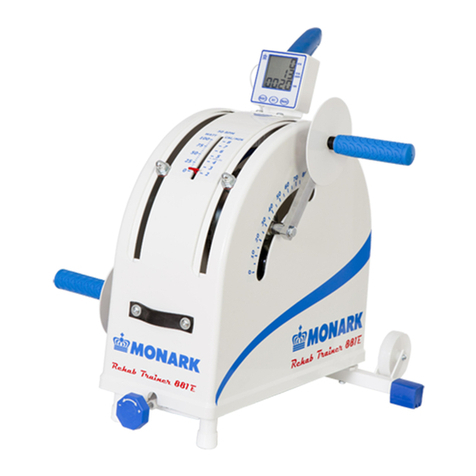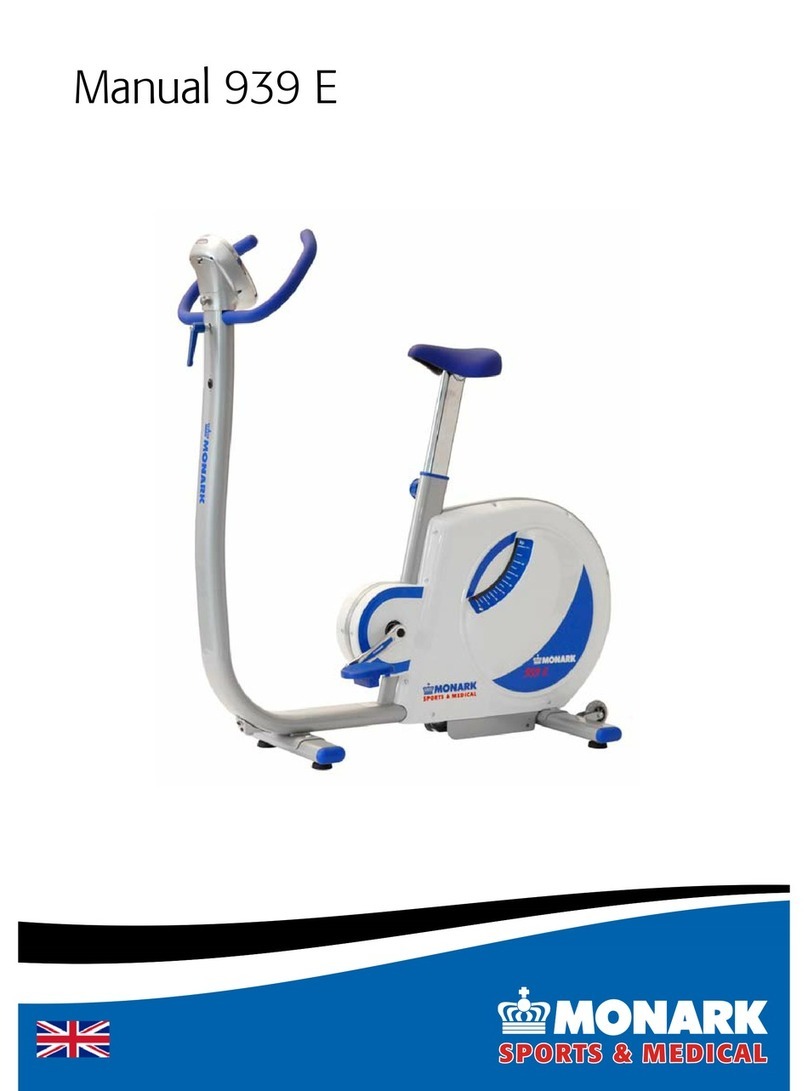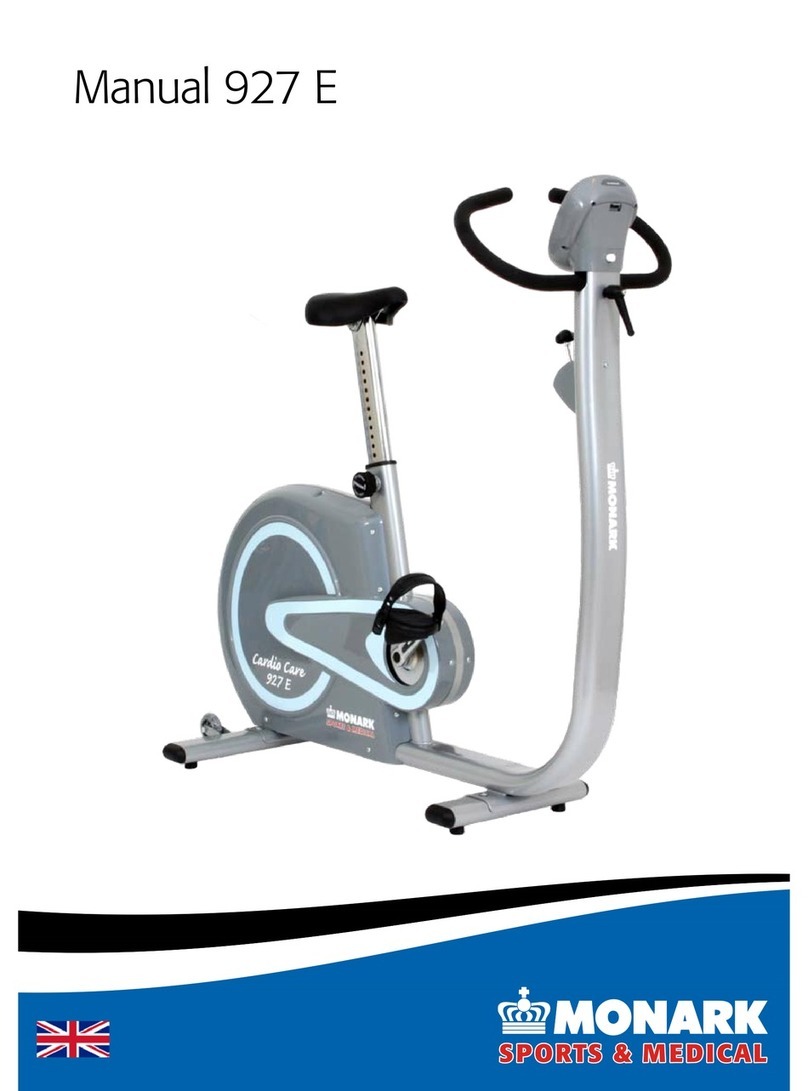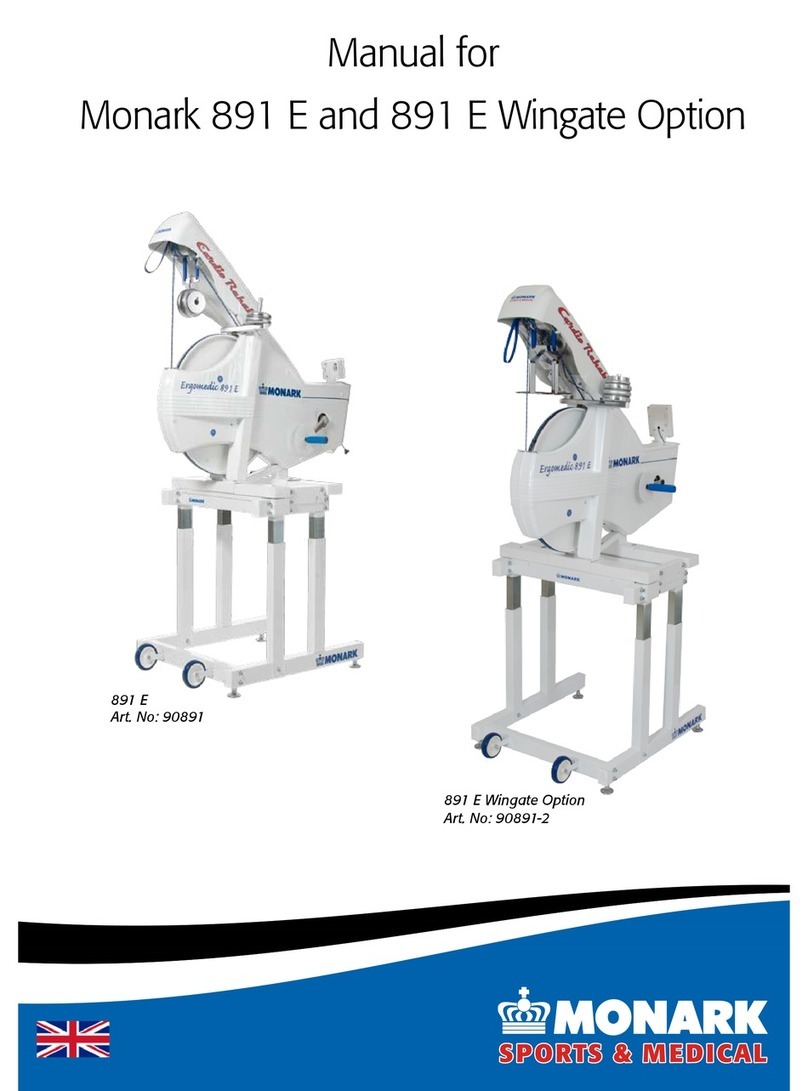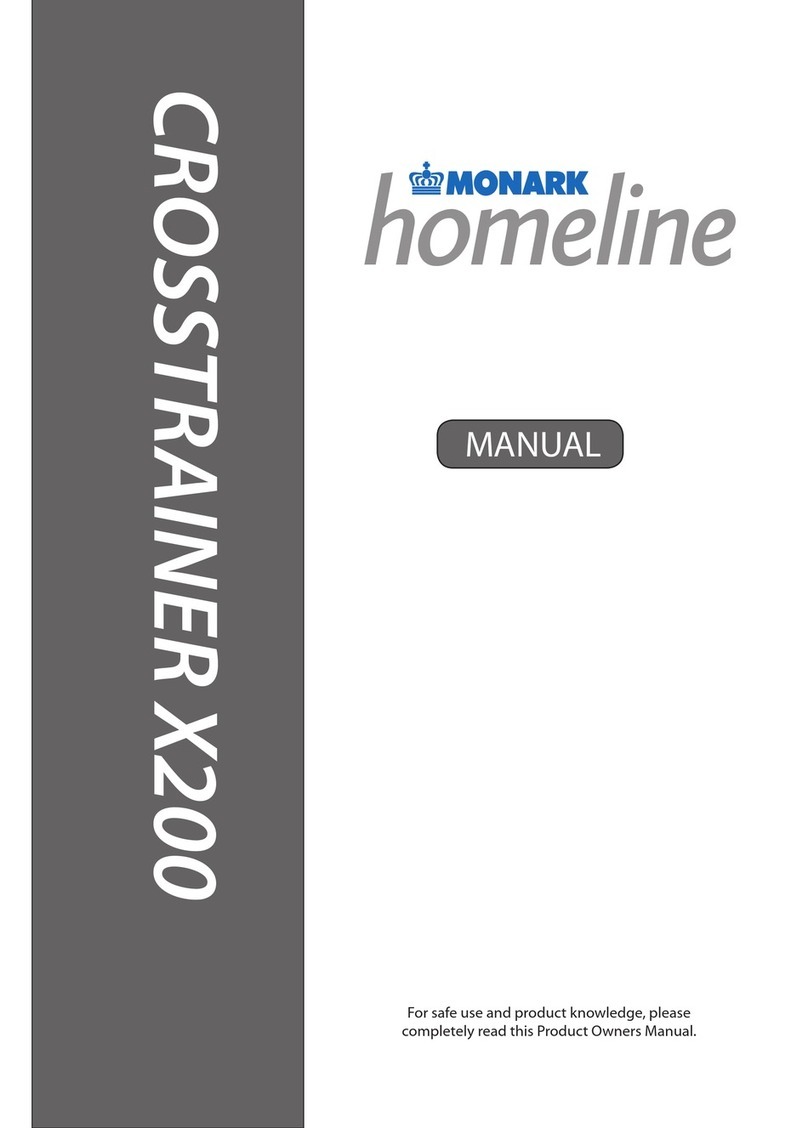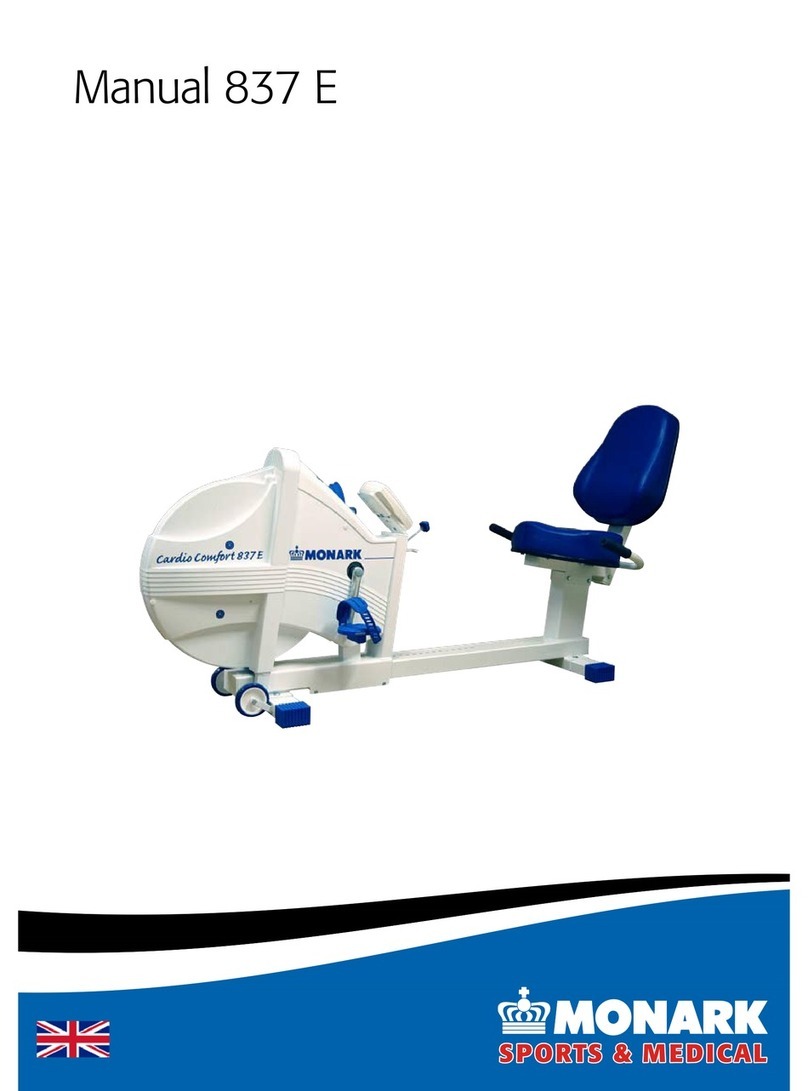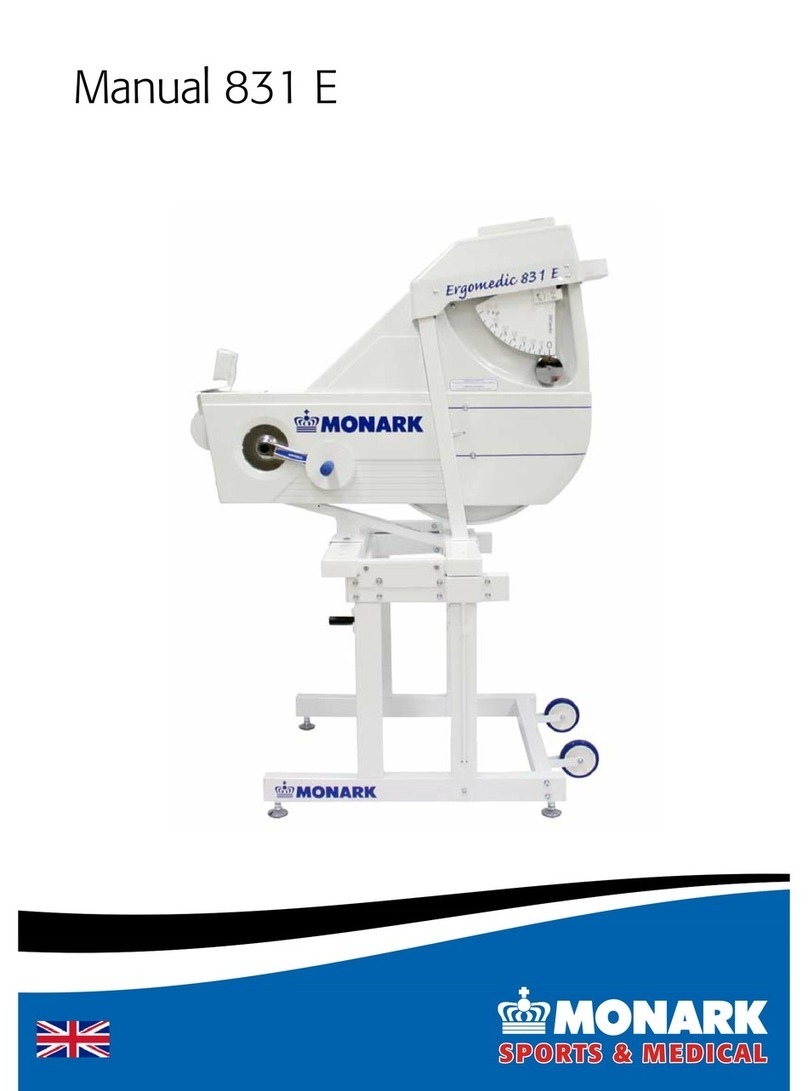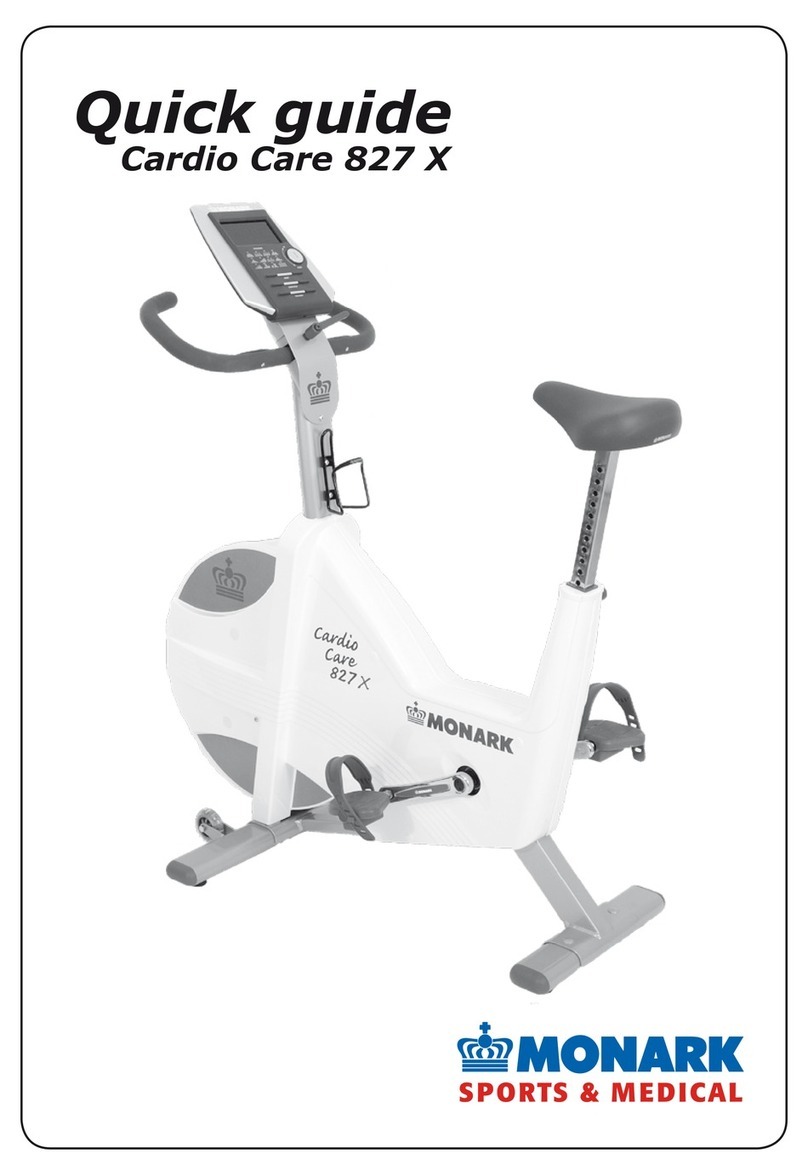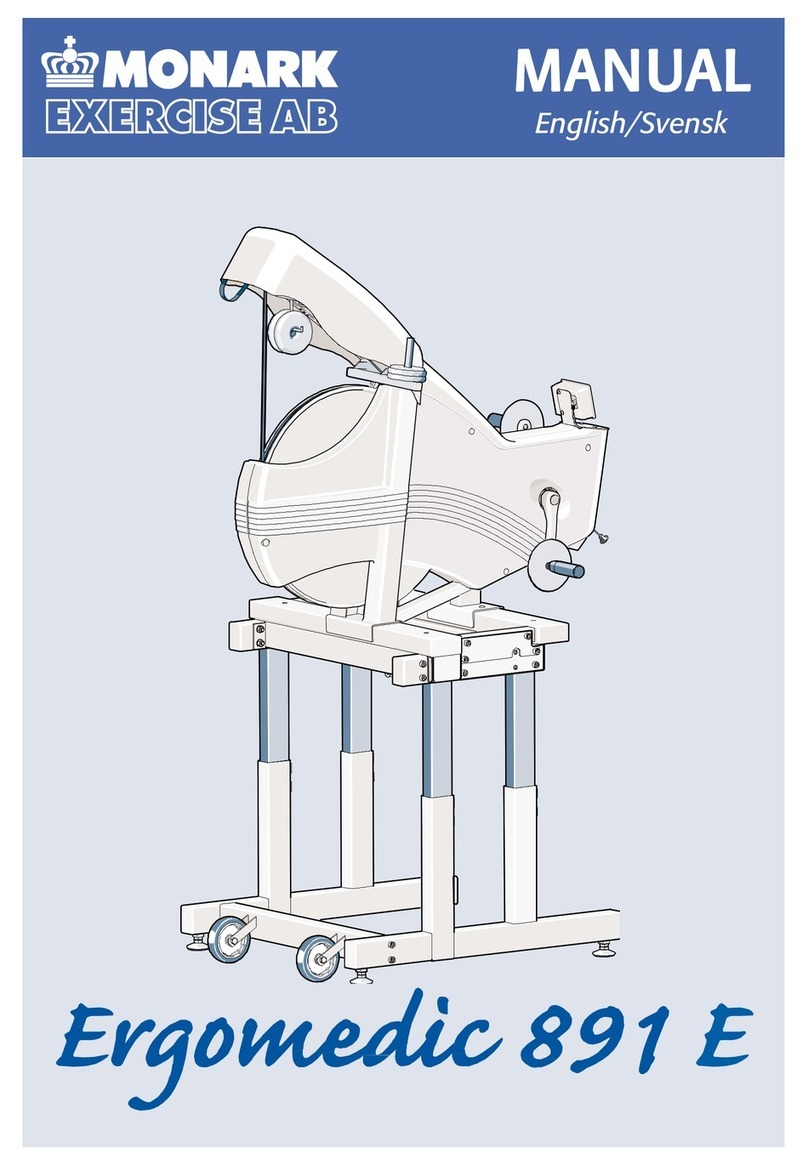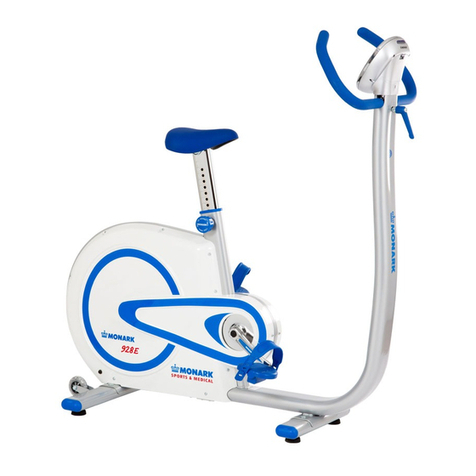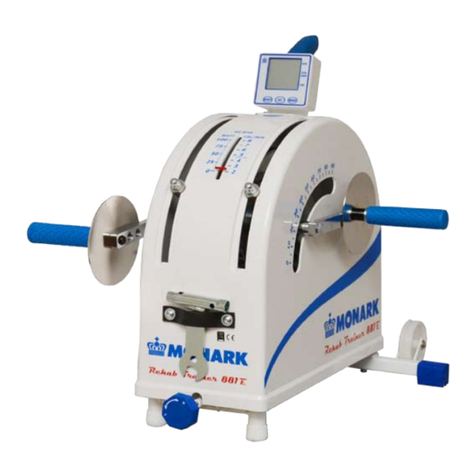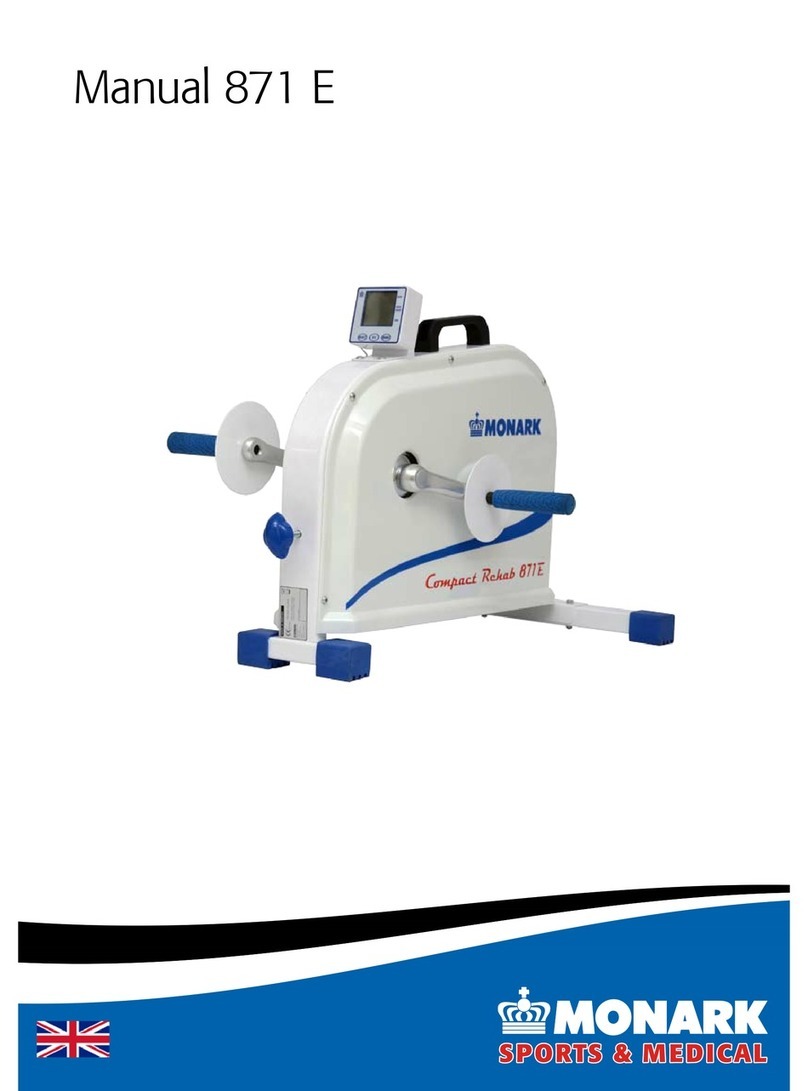
Fig.10
Adjust. nut Tension device
Brake surface
Sand paper
Fig.11
9
REPLACEMENT OF BRAKE BELT
Removetheleftortherightframe cover byundoing the
mountingscrews (5pcs). Putthecrank inabackward
position.Movethe cover somewhatoutinthe front end
andthen takeit backwards toremove it.
Setthetensiondeviceinminposition(minload-only
white).
Loosenthe brakebelta little moreif needed atthe
adjustmentnut.Seefig 10.
Removetheold brake beltfromthespringand tensioner.
Attachthe new brakebelt and assamblethebike in
reverseorder.
NOTE:Whenreplaceing the brakebeltitis
recommendedto cleanthebrake surface.See”Brake
BeltContactSurface”.
ADJUSTMENT BRAKE BELT
Loosenthetension devicetominload.Adjustthebrake
beltso thatresistanceincreases assoonas athe tension
deviceisturned somewhat.Seefig.10.
BRAKE BELT CONTACT SURFACE - BRAKE BELT
Thebrake belt shouldbe checked nowandthen toensurethat ithasnot sufferedexecessive
wear.If itlooksworn itshouldbe replaced.
Depositsof dirtonthe brakebelt and onthe contactsurfacemay causetheunit tooperate
unevenlyandwill also wearoutthebrakebelt. The brakebeltcontactofthe flywheel surface
shouldthenbe groundoffwitha fine sandpaperandany dustremovedwitha clean drycloth.
Dismantlecoversee”REPLACEMENTBRAKE
BELT”.
Setthetension device tominworkload.
Loosenthe brake beltsomewhatat the adjustmentbolt
andtake off thebrake belt totheside. Grindwitha fine
sandpaper oremer cloth.See fig.11.
Grindingiseasiertoperform ifasecondindividual
cautiouslyandcarefullpedalsthecycle.
Irregularitiesonthe brake beltcontactsurfaceare
removedby meansofa finesandpaper oranabrasive
cloth.Otherwise unnecessary wearonthe brake belt
mayoccurand the unitcanbecomenoisy.
Alwayskeep thebrakebelt contactsurface clean anddry.No lubricantisallowed tobe used.
Werecommend to replacethebrake beltwhencleaningthe contactsurface.
Asregards assemblyandadjustment ofthe brake belt,see pageabove.
